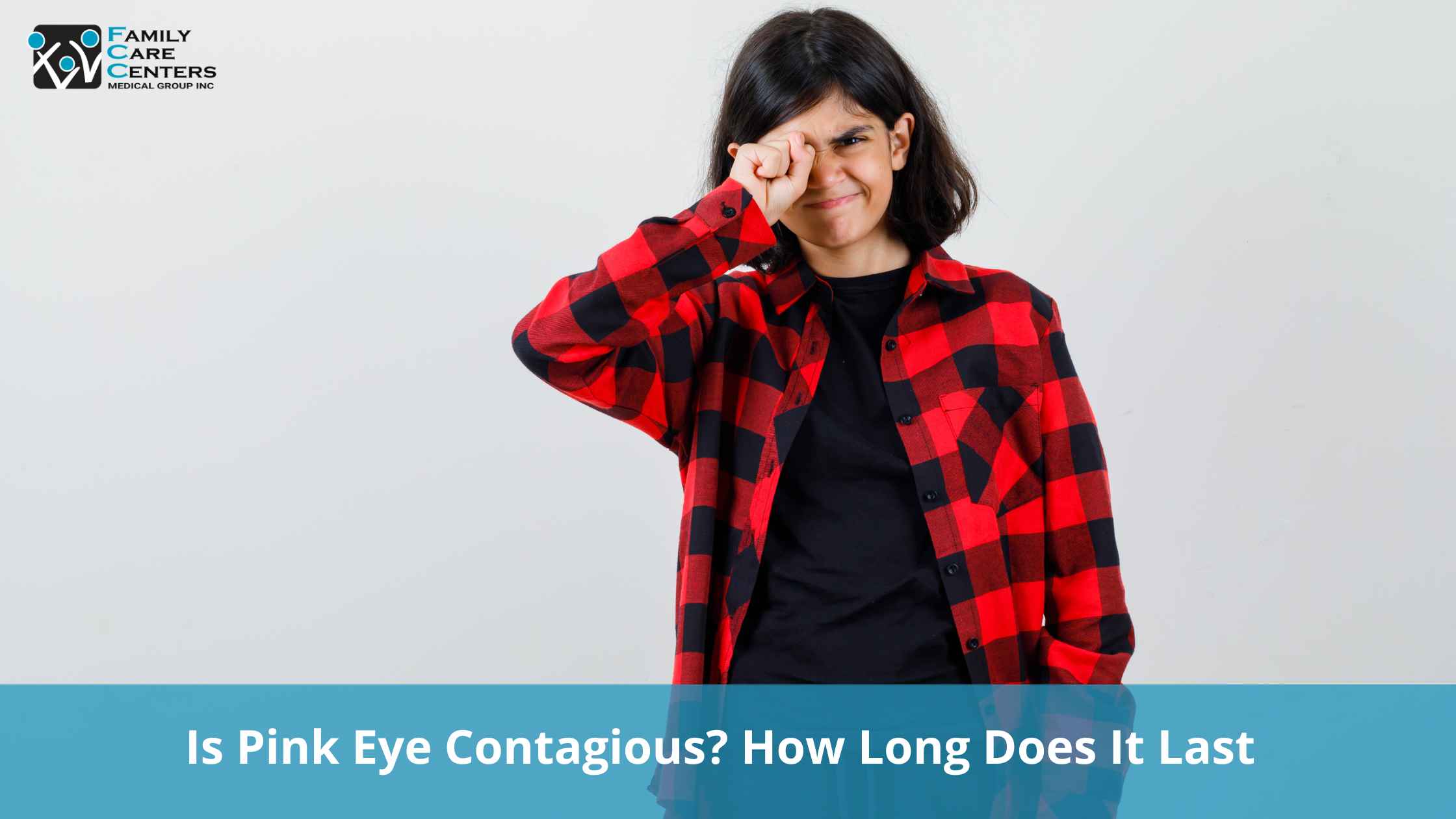

Fountain Valley Urgent Care Permanently Closed. We’re Here to Care for You at Our Other Locations.

Pink eye (conjunctivitis) is a contagious eye condition that inflames or infects one or both eyes, causing redness and varying degrees of discomfort. It can be either acute or chronic, affecting anyone from infants to elders. Statistics reveal that acute conjunctivitis affects 6 million Americans annually, and out of them, 70% of patients seek primary and urgent care.
While many cases of pink eye clear up on their own within some days without medical intervention, severe cases can cause corneal damage and vision loss if not treated on time. Therefore, it is important to get it diagnosed and treated on time to prevent complications.
Pink eye occurs when the blood vessels of your conjunctiva (a clear, thin membrane on the inner surface of the eyelid and the white part of the eye) becomes inflamed, turning pink or reddish in color.
Pink eye is classified into three types based on its causes, including:
This is caused by microorganisms, such as:
Staphylococcal or streptococcal bacteria can cause pink eye. It spreads by sharing objects, touching eyes with unclean hands, or having physical contact with the infected person.
Common cold viruses cause most cases of pink eye. It spreads through an infected person’s respiratory droplets as they cough or sneeze near you, or from you touching surfaces with those droplets and then rubbing your face or eyes.
Allergens like molds, pollens, pet dander, or wearing soft or hard contact lenses can cause allergic pink eye.
Usually caused by irritants:
While infectious pink eye is highly contagious, other types are not. Whether or not your pink eye is contagious depends on its underlying cause.
Infectious conjunctivitis caused by viruses and bacteria is contagious, as the infection can easily transmit from one person to the other.
If you have bacterial conjunctivitis, you can remain contagious while having symptoms or till one to two days after beginning antibiotic treatment., if appropriate. If you have viral conjunctivitis, you can spread the infection as long as you have symptoms or even before you know you have pink eye.
Viral pink eye lasts for one to two weeks and usually improves without treatment. Mild bacterial pink eye may not require treatment and improves within 10 days. However, moderate to severe bacterial conjunctivitis should be treated with antibiotics, and the infection should improve within 24 hours of using antibiotics.
You should see a healthcare provider if your conjunctivitis causes:
Newborns or those with existing medical conditions or a weakened immune system should seek immediate medical intervention.
Mild cases of pink eye are not a cause for concern and can be managed and treated at home.
General care guidelines include:
Though pink eye is not a deadly condition, if an underlying bacterial infection spreads and worsens without treatment, it can cause serious complications such as blindness and more widespread infection. So, visit your urgent care provider if you develop pink eye symptoms that persist or worsen.
If you or anyone in your family develops conjunctivitis, visit one of our urgent care centers in Irvine Woodbridge Urgent Care, Fountain Valley Urgent Care, or Costa Mesa Urgent Care, CA, today for quick relief.